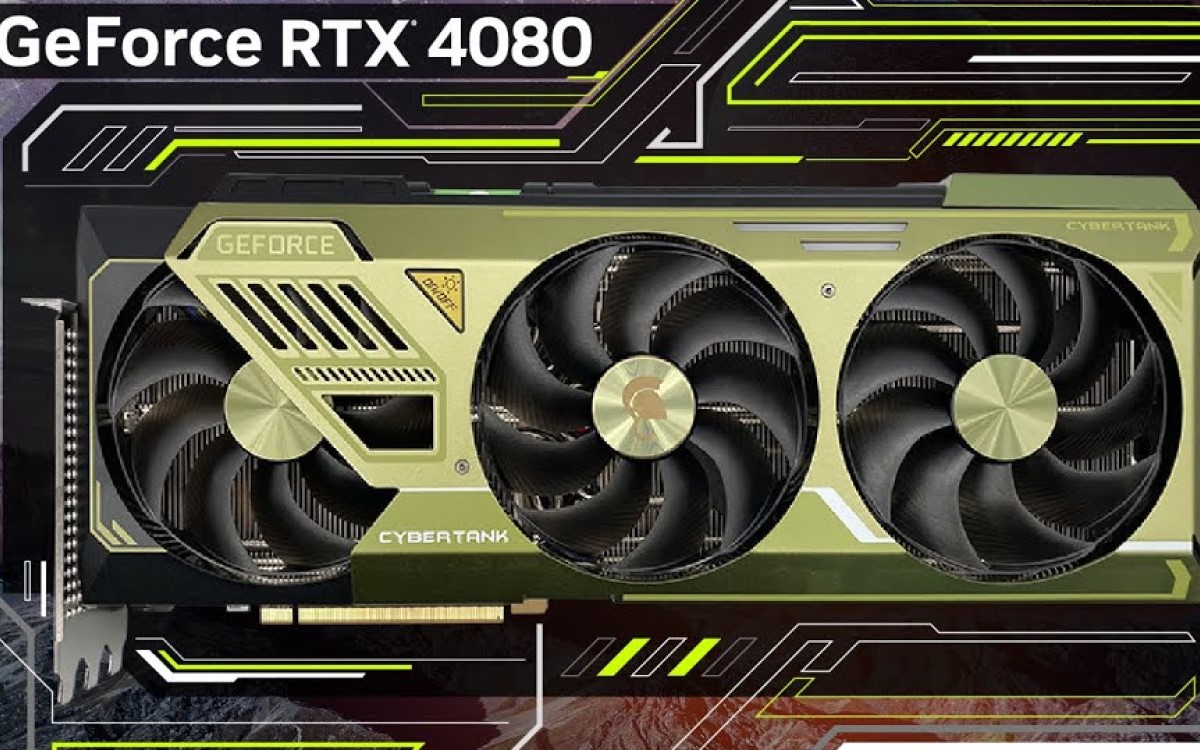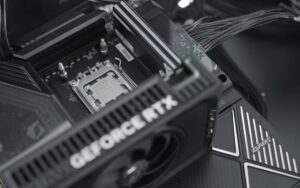
NVIDIA’s commercial partners, which produce several models of GPUs with their brand and specifications, are being analyzed by pages such as Igor’s Lab – which received several reports of problems related to thermal pastes from some manufacturers.
Some readers of the German site complained about the degradation of the component, with excellent cooling performance shortly after purchase and after a short time bringing hotspot temperatures above 100ºC.
It is worth noting that current GPUs have multiple sensors around the die, with the “hotspot” being just the point of highest detected temperature. This does not mean that the entire graphics card is operating at that temperature, just that it has reached its peak in one of its areas. However, the concern is still great with the hardware.

To investigate the issue, Igor’s Lab decided to open one of Manli’s NVIDIA GeForce RTX 4080 GPUs and test the thermal paste. To do this, it was removed from the die and placed in a test rig that presses the material between two conductive surfaces. It is heated to 60ºC and its thermal resistance is calculated.
Additionally, the test was also conducted using a microscope. The results were not positive and it was concluded that the thermal paste used on the hardware was of low quality – allowing it to degrade quickly and being responsible for bringing excessive temperatures over time.
See more:
Conducting tests on NVIDIA GPUs
The examination of the thermal paste of one of the NVIDIA GPUs produced by Manli was extensive and revealed several anomalies.
One is that only a small portion of it has conductive material, for example. Another point Igor’s Lab saw was that it was largely oil and other non-metallic compounds. When the paste is thick, the thermal conductivity is high, but it reduces as the component dilutes.
Using the microscope, it was seen that it also retains large particles of aluminum oxide on its surface – when the correct location is inside the paste. This design would allow the paste to be squeezed around this and separate from the heat-conducting elements over time.

The test conclusions
Igor’s Lab points out that if you have one of the NVIDIA GPUs (except Founders Edition) and see the temperature rising over time, you will need to change the thermal paste to achieve better results. However, it is not a simple matter: video cards are not made to be disassembled and this can even compromise your warranty.
The problem is that when we buy it, it is already assembled and it is not so easy to open it to inspect the component. This leaves open the question of whether the thermal interface material (TIM) is of good quality or not – although, given the price of video cards today, it is assumed that the answer would be “yes”.

Since the GPUs are NVIDIA-branded and manufactured by a commercial partner, it is assumed that everything has been properly tested and will be problem-free during their multi-year lifespan.
Despite the result, there is no proof that the practice of using low-quality thermal paste is also done by other manufacturers or if it is a specific case of the model seen by Manli. However, Igor’s Lab states that it is a trend – with cost reduction to boost profit margins by resorting to reduced qualities.
Fonte: ExtremeTech

Join the Adrenaline Offers Group
Check out the best deals on hardware, components and other electronics that we found online. Video cards, motherboards, RAM and everything you need to build your PC. By joining our group, you receive daily promotions and have early access to discount coupons.
Join the group and enjoy the promotions
Source: https://www.adrenaline.com.br/nvidia/parceira-nvidia-pasta-termica-de-baixa-qualidade-gpus/


